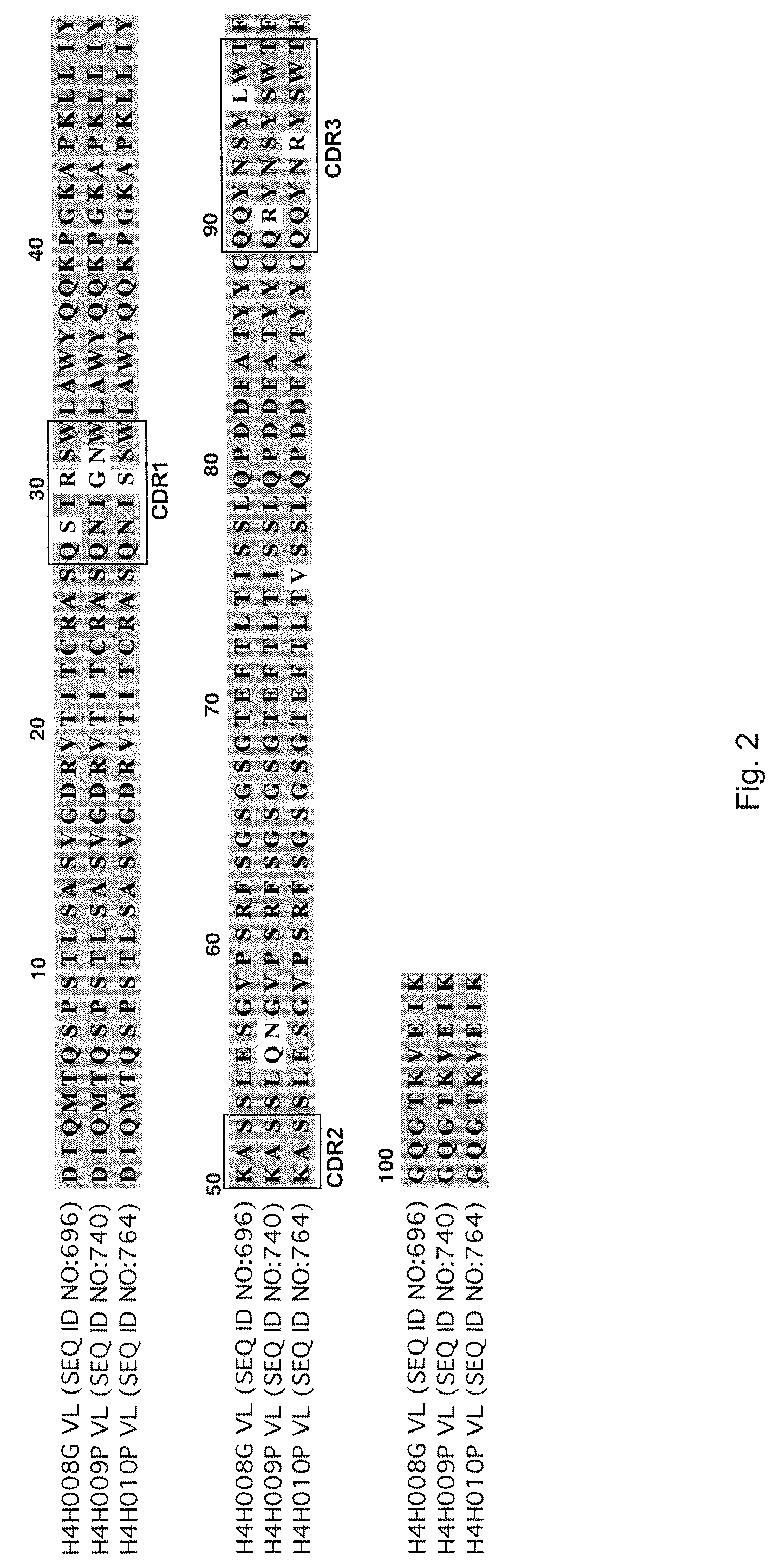Human antibodies to human RANKL, encoding nucleic acids and methods of treatment
a human antibody and rankl technology, applied in the field of human antibodies and antigen-binding fragments of human antibodies, can solve the problems of affecting the function of osteoclasts, affecting the differentiation and function of osteoclasts, and affecting the treatment of osteoporosis and osteopenia, so as to eliminate residual effector functions
- Summary
- Abstract
- Description
- Claims
- Application Information
AI Technical Summary
Benefits of technology
Problems solved by technology
Method used
Image
Examples
example 1
Generation of Human Antibodies to Human RANKL
[0084]Mice may be immunized by any method known in the art (see, for example, Harlow and Lane, supra). The antibody immune response is monitored by standard antigen-specific immunoassay. When a desired immune response is achieved, antibody-expressing B cells were harvested and fused with mouse myeloma cells to preserve their viability, forming hybridoma cell lines. Such hybridoma cell lines are screened and selected to identify cell lines that produce antigen-specific antibodies using assays as described below.
[0085]Alternatively, antigen-specific hybridoma cells may be isolated by flow cytometry. Briefly, after fusion to myeloma cells, pooled hybridoma cells are grown for 10 days in HAT medium. The cells are harvested and stained with biotin-labeled hRANKL at 2 μg / ml for one hour, followed by addition of phycoerythrin-streptavidin. The fluorescence-labeled cells are sorted by flow cytometry (one cell per well into 96 well plates containi...
example 2
Gene Utilization Analysis
[0087]To analyze the structure of antibodies produced in accordance with the invention, the nucleic acids encoding antibody variable regions were cloned and sequenced. The predicted amino acid sequences of the antibodies were confirmed by N-terminal amino acid sequencing. From the nucleic acid sequence and predicted amino acid sequence of the antibodies, gene usage was identified for each antibody chain. For example, antibody 2H10 (HCVR / LCVR SEQ ID NO:722 / 730) and antibody 2G10 (SEQ ID NO: 674 / 682): HCVR: 3-30 (VH), 1-26 (D), 6 (JH); LCVR: 1-5 (VK), 1 (JK).
example 3
Antigen Binding Affinity Determination
[0088]Equilibrium dissociation constants (KD values) for antigen binding to the selected antibodies generated by hybridoma cell lines described above were determined by surface kinetics in a real-time biosensor surface plasmon resonance assay (BIACORE™ 2000). Each selected antibody was captured on a goat anti-mouse IgG polyclonal antibody surface created through direct chemical coupling to a BIACORE™ chip to form a captured antibody surface. Human RANKL at 25 nM was injected over the captured antibody surfaces, and antigen-antibody binding and dissociation was monitored in real time for 1.5 hours at room temperature.
[0089]
TABLE 1AntibodyKD (pM)7B10-14551F2-620303B11-788.55A6-15191G5-86992A12-11406A10-14912D3-33831G9-992.45C11-61005E3-32366B6-427.77G12-73736A8-21073G10-32754D2-33467G11-42392E3-2976.42F8-965
[0090]Equilibrium dissociation constants (KD values) for antigen binding to the selected anti-hRANKL mAbs generated via direct isolation of sp...
PUM
 Login to View More
Login to View More Abstract
Description
Claims
Application Information
 Login to View More
Login to View More - R&D
- Intellectual Property
- Life Sciences
- Materials
- Tech Scout
- Unparalleled Data Quality
- Higher Quality Content
- 60% Fewer Hallucinations
Browse by: Latest US Patents, China's latest patents, Technical Efficacy Thesaurus, Application Domain, Technology Topic, Popular Technical Reports.
© 2025 PatSnap. All rights reserved.Legal|Privacy policy|Modern Slavery Act Transparency Statement|Sitemap|About US| Contact US: help@patsnap.com


